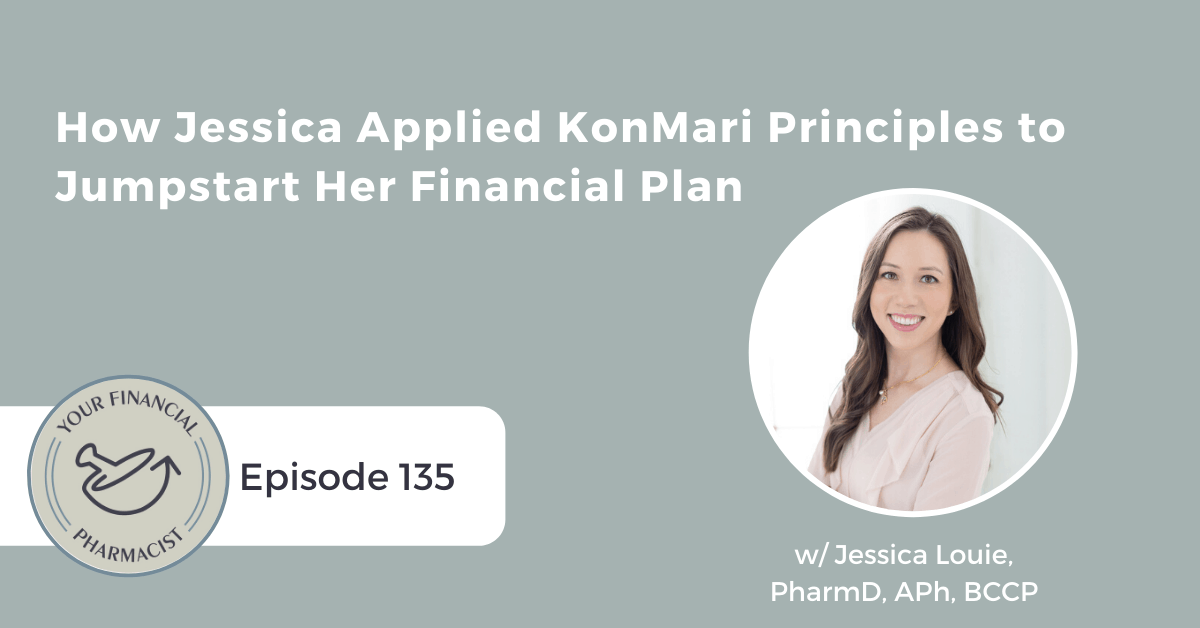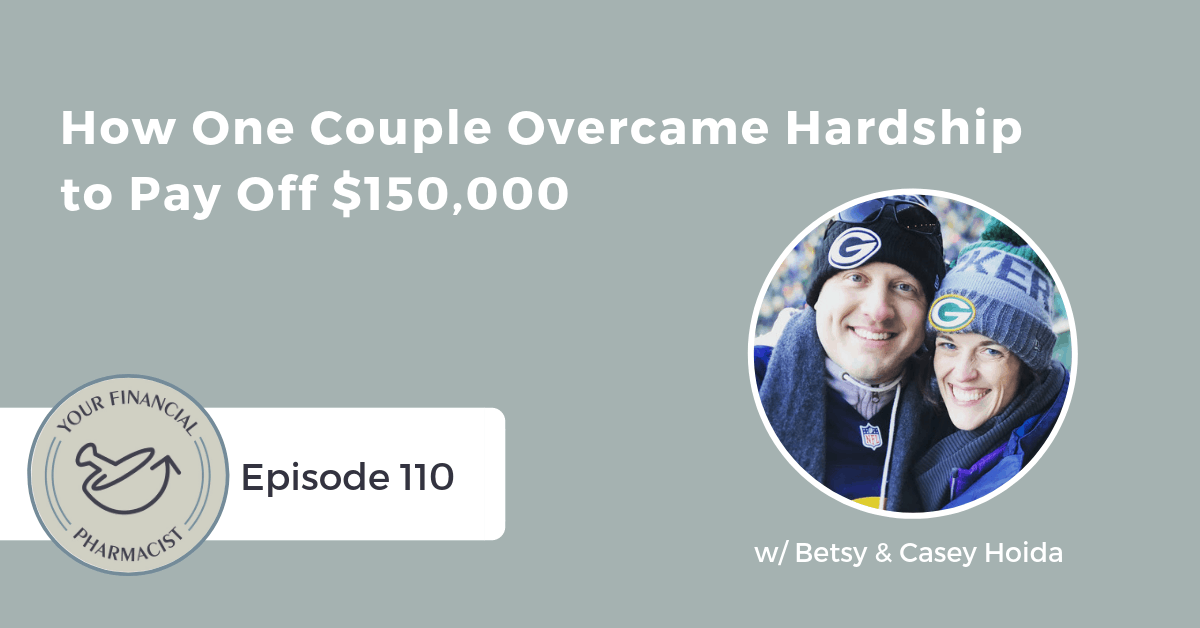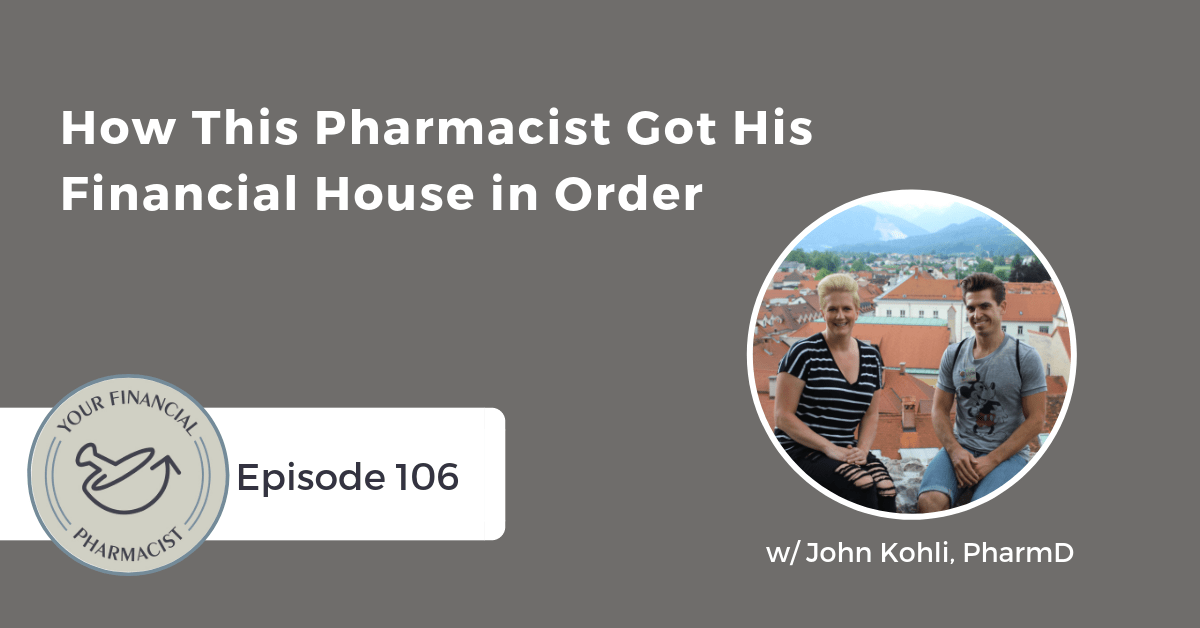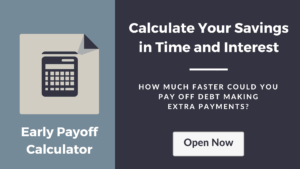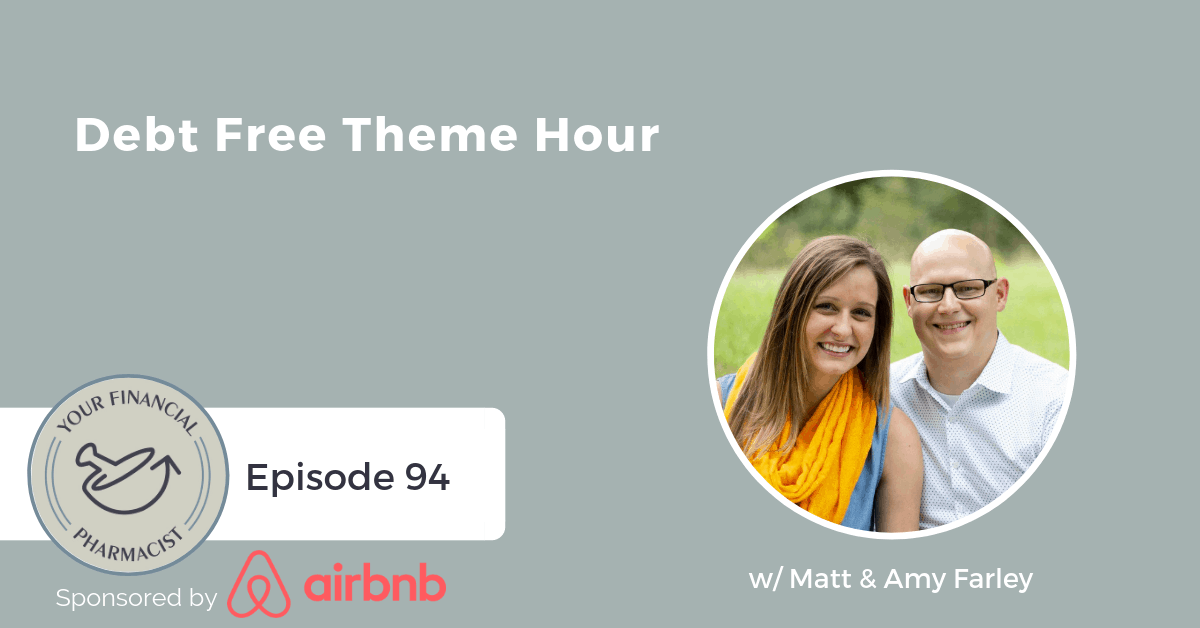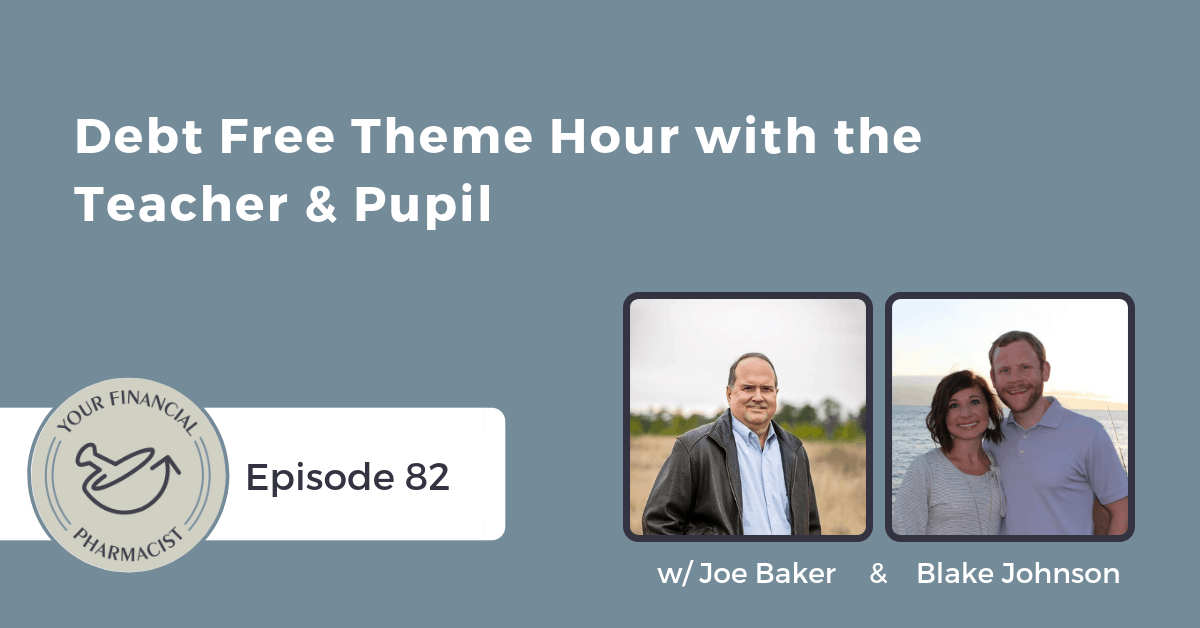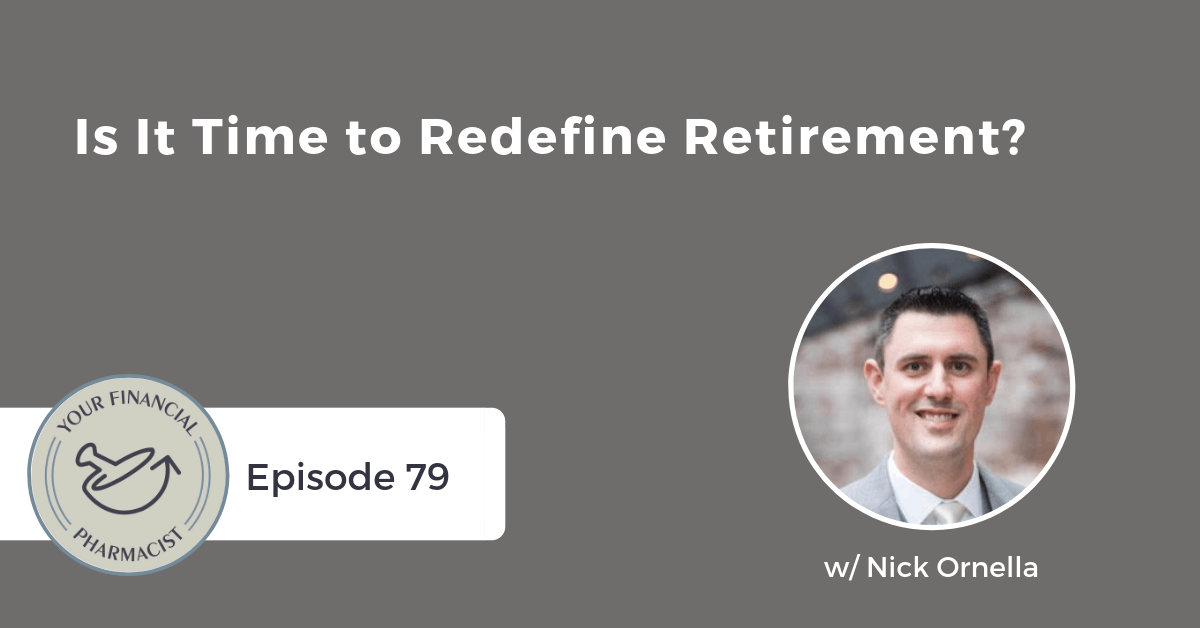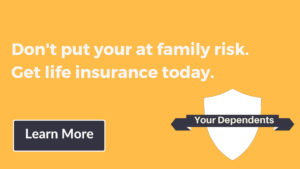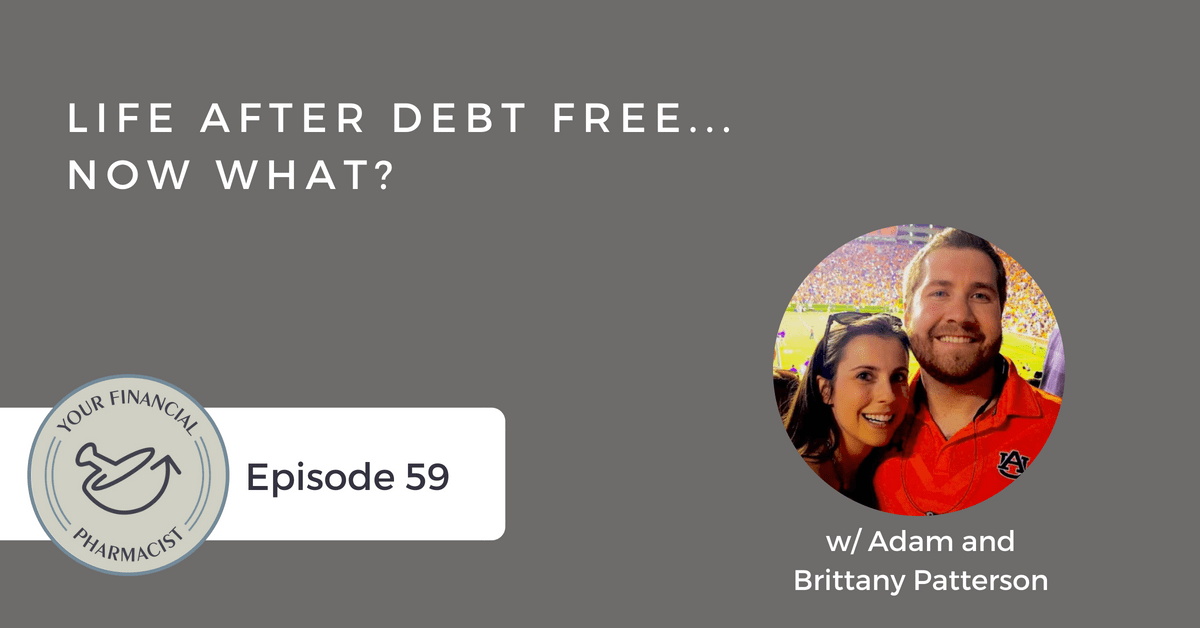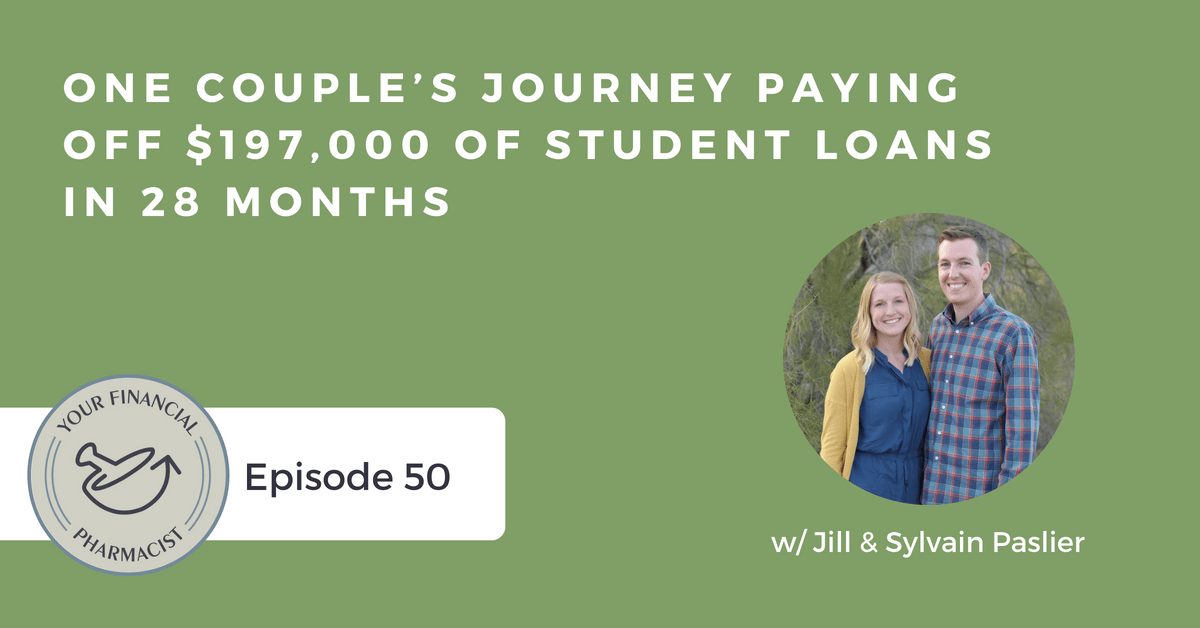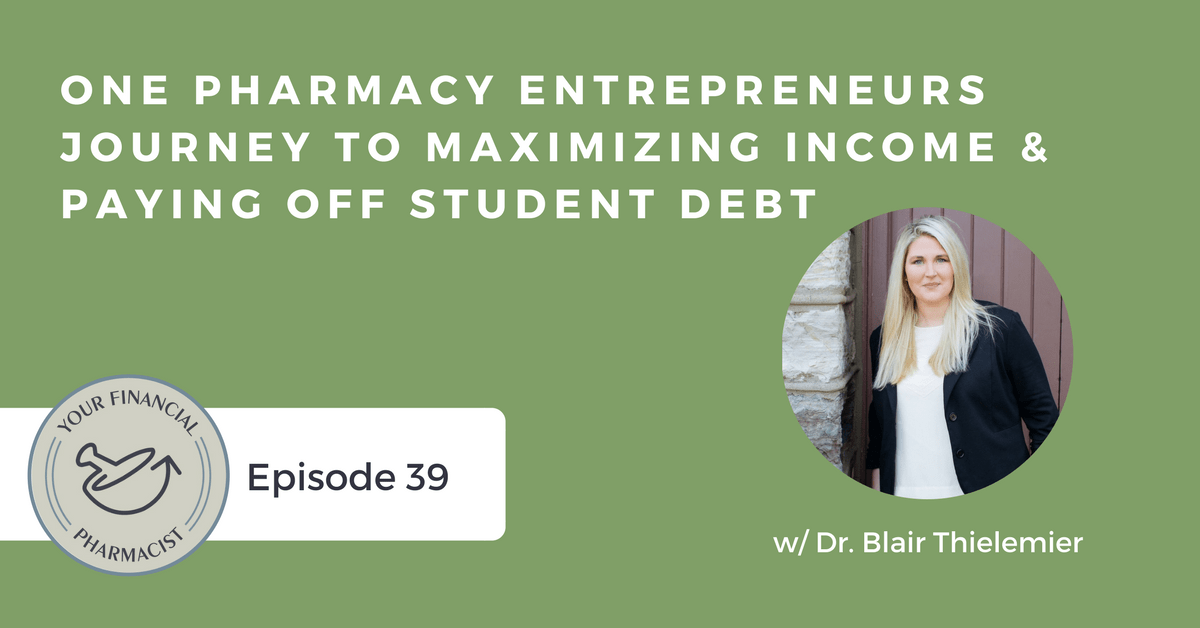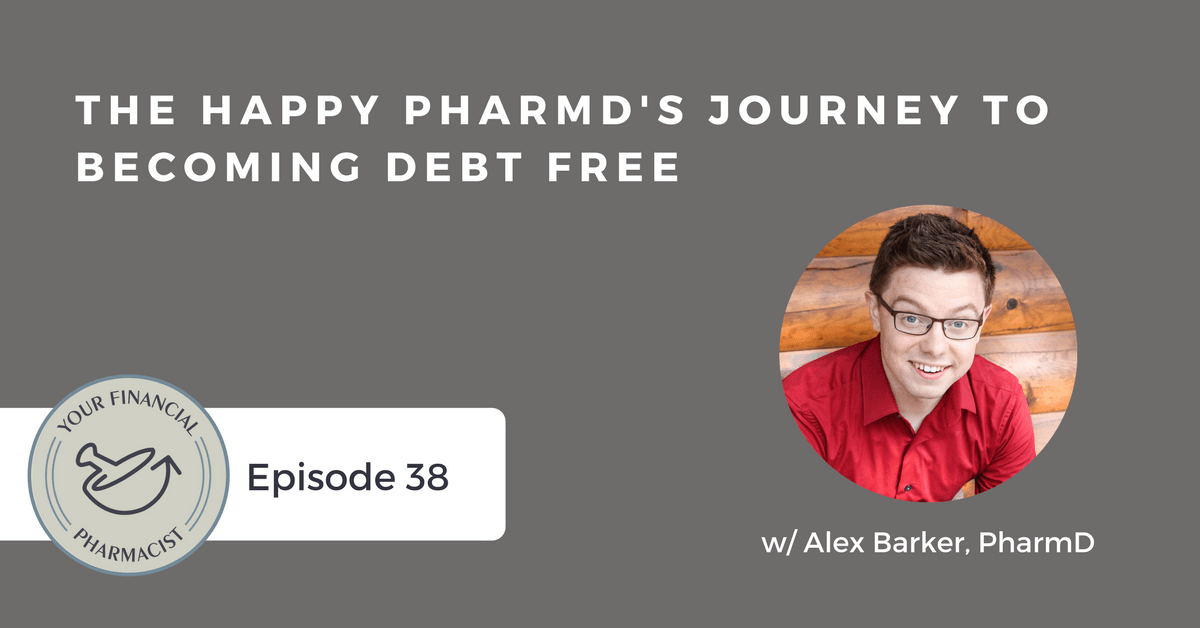How Jessica Applied KonMari Principles to Jumpstart Her Financial Plan
Dr. Jessica Louie joins Tim Ulbrich on this week’s episode. Dr. Louie is a Certified KonMari Consultant and Coach, creator of Clarify Simplify Align, host of The Burnout Doctor Podcast, Board-Certified Critical Care Pharmacist and Associate Professor of Pharmacy Practice at West Coast University College of Pharmacy. She shares about her journey being trained as a critical care pharmacist, how she quickly found herself burned out, how the KonMari method helped her and how she applied the KonMari method to her financial plan. These small intentional daily steps led to big changes in her financial plan including being completely debt free and having over 6 figures in savings.
About Today’s Guest
Hello there! I’m Dr. Jessica Louie, the founder of Clarify Simplify Align & The Burnout Doctor Podcast where I help BURNED out pharmacists get out of overwhelm and live with LESS clutter and MORE energy. As a former shopaholic, workaholic and pharmacist struggling with burnout, I know how it feels to live a life in overwhelm without clear goals or a clear purpose. Fortunately, I was saved by decluttering and simplifying my life and now my simple framework – Clarify. Simplify. Align Method – helps YOU go from cluttered & stressed to leading with confidence & curating a life YOU love! Are you ready to get started?
Summary
Dr. Jessica Louie shares how she became burned out as a pharmacy resident, how the KonMari method helped her recover from that burnout and how she applied the KonMari principles to her financial plan. Jessica realized that she was burned out in 2014. She thought that she was going to enjoy life after all of her pharmacy training but ended up not being fulfilled as she got closer to the finish line. She turned to shopping as a coping mechanism and wasn’t living intentionally. Her aunt suddenly died and she had a wake up call that life is short.
Jessica discovered the KonMari method which saved her from the burn out. She started looking at her life and seeing what things in her life that she spent her time and energy on sparked joy. Jessica shares that the KonMari method can be applied to not only your home but also your life.
Jessica went to a private school that cost $500,000. After grants, work study and an internship, she had to pay $300,000 out of pocket. When she finished her PGY2, she had $35,000-$40,000 in debt. Jessica was looking for another Japanese philosophy that she could use to take control of her finances and discovered the Kakeibo method which translates to “household ledger”. With this method, you track your spending with a pen and paper and break up your expenses into four categories: survival, optional, cultural and extra. Jessica reflects on her purchases each day to see where her money is going.
With this tracking system, Jessica was able to become very intentional with her spending, delay gratification by not purchasing items on a whim, and really put quality purchases and experiences in front of the quantity of them.
Mentioned on the Show
- YFP Planning
- YFP 086:How to Spark Joy as an Entrepreneur w/ Jessica Louie
- Clarify Simplify Align
- The Burnout Doctor Podcast
- Tidying Up with Marie Kondo on Netflix
- Start with Why: How Great Leaders Inspire Everyone to Take Action by Simon Sinek
- How to Apply the KonMari Method to Finances / Kakeibo
- Free Kakeibo Tracking Sheet
- The Joy of Missing Out: Live More by Doing Less by Tonya Dalton
- Work with Jessica
- Connect with Jessica on LinkedIn
- Connect with Jessica on Instagram
- Connect with Jessica on Facebook
Episode Transcript
Tim Ulbrich: Hey, what’s up, everybody? Welcome to this week’s episode of the Your Financial Pharmacist podcast. It’s a pleasure to welcome back onto the show Dr. Jessica Louie. Dr. Louie came on in Episode 086 to talk about how to spark joy as an entrepreneur. And on today’s show, we talk more about her applications of the KonMari method and principles on her financial plan and the transformation that that has had. Jessica, welcome back to the show.
Jessica Louie: Thank you, Tim, for having me on the podcast.
Tim Ulbrich: Very excited. It’s been fun to track so much of what you have been doing in your own journey since Episode 086, so I look forward to bringing our audience up to speed as well as talking about some of the wins that you’ve had and how you’ve been able to tackle your own financial plan. So while I know that some of our audience is already familiar with your background from listening to Episode 086 or potentially following your podcast and the work that you’ve been doing, I certainly don’t want to make that assumption for all, considering that your background is such an important part of this story that led to the transformation that we’ll talk about in detail today on the show. So you do hold, as I mentioned in the introduction, you hold several roles, both as an entrepreneur and as a healthcare professional in the academic setting as well. So let’s start in the pharmacy space. What’s your current position at the university? And can you share about how you got into that work?
Jessica Louie: Yes, of course. So I currently am an associate professor of pharmacy practice at West Coast University School of Pharmacy in Los Angeles. And I’m a 2013 graduate from University of Southern California. And I then went on to pursue a PGY1 in pharmacy practice and then a PGY2 in critical care at University of Utah. And after I finished my residencies, I joined as an assistant professor at West Coast in 2015.
Tim Ulbrich: Awesome. So you know, as I think about, Jessica — and I know you and I have talked about this before offline, obviously you went to pharmacy school, we all know the work that needs to be done before you even get to pharmacy school. You then go through extensive residency training. And as you’ve talked about before, it took you nine years to get through the training and become a board-certified critical care pharmacist, which our listeners know it takes a lot of time, a lot of effort. But I think many people think, wow, you’ve got everything that you needed and you’ve wanted. You’ve got obviously the PharmD, you’ve got residency training, you’ve become board-certified, you finally have made it to the finish line, it’s time to enjoy life. But that really wasn’t what happened when you got to that point. You found yourself burned out. So talk to us more about how you got to that realization of getting to that point of getting burned out.
Jessica Louie: Yes, that’s a great observation, Tim. I think that a lot of us feel that when we get to the end of our training and we get all the certifications, you know, life is going to be great. We’re going to be happy and fulfilled by it. And I definitely felt that that was the path I was on. I was going to enjoy my life. So back in 2014-2015 when I was finishing up everything, I realized that getting to the finish line was not fulfilling. I was so burned out from residency, my first year in academia, and to cope with all of that, I was turning to other things. And one of the things I was turning towards was shopping to try to fill these feelings of frustration and unfulfillment. So you know, I’ve talked a little bit about my journey before, but basically, I wasn’t living intentionally, I wasn’t bringing joy into my life. So when a life event happened, it really woke me up to show me how I was living and how life can be so short. So I invested a lot of time, a lot of money, into changing my situation. And you know, that’s how it’s led into my business. And I can go into a little bit more details if you’d like.
Tim Ulbrich: Yeah, and we will — just real quick, we will link in our show notes to The Burnout Doctor podcast. I know you’ve documented more of your journey there, and I think our listeners, many of whom may be struggling with similar challenges, would get lots of value from not only hearing more about your story but also the great content and work that you’ve done with that podcast. So you mentioned some of the behaviors, you know, you mentioned the shopping piece that was really kind of a coping mechanism and that. How did you self-realize that, you know, something’s got to change? And then ultimately, talk to us about the KonMari method, what that is for our listeners that may not know and how that played such a big role in helping you get out of that cycle.
Jessica Louie: Yes. So I think that what really woke me up was the combination of a few things: realizing that I was still keeping residency hours during my first career. And you know, 60-80 hours a week wasn’t necessarily sustainable in the long term. And you know, one of the things that played into that was my partner and boyfriend was also in residency in medicine, so he was keeping long hours. So I realized, you know, maybe this isn’t normal in a full-time job situation. And I was putting work first all the time and still was not enjoying friends and family. And then when my aunt passed away suddenly from a very aggressive cancer, that’s really what woke me up and realized that wow, I really hadn’t been traveling and spending a lot of time with family that I really wanted to. So the KonMari method is what I consider saving me from a lot of my burnout. You know, it is a decluttering and simplifying technique, popularized in Japan by Marie Kondo. So it really is about how you spark joy in life and what you focus your time and energy on so that it is about decluttering a physical space first because that’s what is closest to you, that’s what has the largest impact on most people and can create a lot of distraction and overwhelm in your life. So you apply it to your home first, and then you’re able to apply the same techniques to other areas of your life. But you know, what made it a little bit more popular I would say is the technique creates this life-changing transformation because people don’t rebound when they go through the technique from beginning to end. So you’re not consistently organizing or hiring professional organizers multiple times in your life. You’re doing it once, however long it takes, one month, six months, a year, and then it really changes your habits of how you view physical items and that leads into how you spend your money and things like that.
Tim Ulbrich: So before we get into the weeds about the application of those principles to the financial plan — because I think that’s a really neat connection that those that are even familiar with the KonMari method may not see that. I know many people are aware of this through the Netflix series and others that came out. And I think people think about it — many people I think think about it more as just an organization, simplifying of your stuff at home, which obviously has impacts on your finances. But I think we’re going to talk in more details about how that can result in tracking spending and reflecting on spending. But for those that may not be as familiar, I want them to be able to visualize this, even about the physical space, before we talk about the financial aspects of it and how you apply to that. So if you’re working with somebody, and you’re going into the home and the goal is to simplify, walk us through like what does that process look like? And what are the common things that you see that are barriers that people may not even see themselves, right?
Jessica Louie: That’s a great question, Tim. So when I’m working with clients in their homes, the first step that I think a lot of people miss in the KonMari method is we don’t just start pulling things out and decluttering right away. We really take this intentional moment and my clients usually work on this as a pre-work in our workbooks to really set up the ideal vision for your life. So that’s what I call the Clarify step in my method. And you’re clarifying your why, your purpose, your values and really visualizing how you want your space to feel when you’re standing in it. So it’s not only about what it visually looks like because, you know, honestly, I don’t live in a Pinterest-worthy home or anything. And most of us don’t. So it’s more about what it feels to you when you’re standing there. And many people want that feeling to be calm, peaceful type of sanctuary in their home settings. So we’re really diving deep into that and getting into why you really want to get this done. You know, if you get stuck during the process, what’s going to help propel you forward? So we get that very well written down and on paper so it’s a good goal and very clear. And I think that you and Tim Church have talked about this as well with how you clarify in the financial process. So it’s very similar.
Tim Ulbrich: Ah, the ever-talked about why, right? We talk about that a lot on this show, as you mentioned, and I think it’s so important to the financial plan but also important here in what you’re talking about, certainly connections. And I know for you, speaking of the why, “Start With Why,” Simon Sinek’s book, which is such a great read, we’ll link to that in the show notes, was so critical for you in your own journey. So talk to us for a moment about that concept, the concept of start with why and why that’s so important as folks are thinking about this and how they may apply it to their own personal situation.
Jessica Louie: Yes. So Simon Sinek’s books are definitely transformative for me. It was actually my brother-in-law, who is a former pharmacist, who recommended them to me. It took about nine months for me to actually read them when he saw that I really needed that process. So Simon Sinek’s “Start with Why” process, he has three or four books now. And it’s really about we live life, and a lot of times, we live it on autopilot and we don’t realize a lot of things in our lives connect to one another and really sitting down and writing out how our life experiences have shaped us and getting clear on why we get up in the morning, that’s really what it comes down to. And we don’t get up in the morning for a tangible things like money and family members, we get up for a larger purpose that we won’t necessarily achieve in life but we have in the forefront of our mind when we’re making decisions. And that kind of plays into our value system and how we do things the way we do them. So I actually went and trained with Simon Sinek’s team in New York back a few years ago. So it was really helpful to get those down on paper so that what you do is not what you’re defined by. It’s why you do things and how you make decisions then. So I definitely recommend the process. It’s a great read. Also an audiobook as well. It’s really helped me in how I view life and then how I view leadership as well.
Tim Ulbrich: Absolutely. So good. And I know he’s got some really cool resources, obviously the book but also some workbooks and things that you can do that help you to articulate and go through the activities that will help you define your why. So important to everything we talk about on this show. So before we talk about the method and the steps of how you paid off your loans and have put yourself in the financial position that you’re in that I think our listeners will be able to apply as well to their own personal situation, let’s start with the position you were in. So talk to us about the debt that you accumulated through school and what was the amount that you were working with before we actually get into the how you paid that off.
Jessica Louie: Yes, definitely. So I will say that my dad was really influential in this. My dad is Chinese, and he actually kept all these Excel spreadsheets. So I actually have pretty exact numbers. So looking at it, so I went to a nonprofit private, so USC is private. And I was there for seven years for my bachelor’s degree and pharmacy school. So the school cost about $500,000. And I received $115,000 in school grants, so that’s money you don’t need to pay back. I took out $50,000 in student loans — so that was about $14,000 for undergrad. I spent three years getting my bachelor’s degree for that; I shortened it by a year intentionally — and $36,000 for pharmacy school. And then I rounded it off with about $40,000 in work-study and my intern pharmacist position at the hospital at USC. So out-of-pocket costs were just under $300,000 for my schooling.
Tim Ulbrich: Wow. Wow. So obviously big price sticker tag for what’s known as a great school, of course. And obviously, you mentioned having some grants, which is money you don’t have to pay back. You mentioned having some work-study components but still a huge out-of-pocket component. So when you found yourself — let’s fast forward and roughly, if you don’t have the exact numbers, but it sounds like maybe you do. You know, you’re at the point of graduation, you start one year of residency, two years of residency. Obviously, we’re talking big numbers, limited income during residency. So take us to the point where you finish your PGY2. Where were you at there at that point in terms of debt that you were working through and trying to pay off? And what was the mountain that you were after at that point?
Jessica Louie: So during residency, I was paying on my student loans. I wasn’t paying a large sum, I would say, but I still was paying probably about $300-500 a month, I would say.
Tim Ulbrich: OK.
Jessica Louie: And I came out, I want to say around $35,000-40,000 left. And after my PGY2 — so I started working in July of that year at the university. And it took me seven months to pay off the rest of the loan. So I want to say it was around $35,000 when I came out of residency.
Tim Ulbrich: OK. So even though — and I think it’s important for our listeners to hear that. You know, we obviously talk a lot about the national debt loads right now, Class of 2019, the average was about $172,000. So here we’re talking about a lower payoff amount but a very aggressive window in which you were able to do that. And obviously, we’ll talk about the method that you were able to do that. Short period of time, aggressive repayment, but there was also things that I don’t want our listeners to lose that you were able to do through working, through work-study, through pursuing grants that helped to minimize that while you were in school as well. So let’s talk about the method that you were able to use to help ultimately pay this off in an aggressive period of time based on the KonMari principles, the Kakebo method. Talk to us about what exactly is that? How is it used? And then we’ll dive in further of exactly how people may apply that month in and month out to their own plan.
Jessica Louie: Yes, of course. So you know the KonMari method is a Japanese philosophy, so I actually was also looking for all their philosophies, and I came across the Kakebo method. And you know, translated, it basically stands for “household ledger.” And it is a really simple philosophy and concept, in my opinion where you’re able to track your finances on this ledger. So you basically use pen and paper, going back old school, to track everything. And each month, you come up with a plan of what are your fixed expenses and you’re going to track everything that you spend money on. So I consider this a daily practice as part of my evening routines. And then you have a savings goal as well. And then at the end of the month, you look at how you did. And I also do a weekly practice to check in and then the end of month practice. So when you’re tracking, it’s not the typical tracking, I would say. It’s broken into four different pillars. So the pillars are Survival, Optional, Cultural, and Extra.
Tim Ulbrich: So you’re categorizing as you’re — let’s say you’re making charges on a credit card, those charges are coming in, you’re manually tracking those. And then you’re assigning those to one of the four categories. Is that accurate?
Jessica Louie: Yes.
Tim Ulbrich: OK. So break those down. Let’s go through those one-by-one. Survival, Optional, Cultural, Extra. So give me some examples — probably this one more self-explanatory than the others — but Survival items would include things like that?
Jessica Louie: So those would be things that you need to survive, so a lot of your fixed expenses, so your housing cost, if you have transportation costs, general food costs like groceries, and like health insurance, things like that. So things that are more difficult to change but things that are probably a large portion of your overall expenses.
Tim Ulbrich: So we often, as we’ve talked about budgeting before on the show, we would categorize these as necessary or essential expenses. So same idea. And I like to think, you know, making the connection here to something like an Emergency Fund, this is usually the number that I’m using when I think about 3-6 months of what I’m basing that off of. So that’s the survival category. What would you then put in the Optional category that I think we often refer to as the discretionary expense?
Jessica Louie: Yes, so these would be things that aren’t necessarily survival mode. So instead of groceries, this would be eating out, fast food, and those luxury type of expenses, so clothing that’s not necessary, skincare, nail salon, things like that.
Tim Ulbrich: OK. And what intrigued me is we — I see here that again, we have four buckets: Survival, Optional, Cultural, Extra. And when we tend to think of discretionary expenses, I see some crossover between the Optional and the Cultural bucket. So break down for us what would be some examples of things that would be in the cultural bucket. But why also is that important to separate that out from those things that are considered Optional?
Jessica Louie: Yes. So I think that the Cultural really plays into the Japanese philosophy of how we invest in ourselves, personal and professional development. So this is getting back into thinking about going to the theater and things like movies, music, that we consider more cultural nowadays. So it’s really about putting those experiences and memories into play. So the KonMari method really emphasizes creating memories and experiences in your life over investing in stuff. So this method also goes into that with how you view things that give back to your community or just have great memories that you don’t necessarily need to travel to.
Tim Ulbrich: I love that. I’ve never seen that separated out before, Jessica. But I love that because I think it does exactly what you just said is it forces you to be a little bit more intentional about prioritizing those things whereas I think especially if you’re in a mode of either trying to cut, cut, cut to pay off debt or you’re just a really aggressive saver and you have a hard time spending money on experiences and things like music and theater and books, things that would fall into that category, I like that there’s a manual process to keep yourself accountable to that and calling it out as a separate category. So that’s the cultural bucket. What would fall, then, into the Extra category?
Jessica Louie: So the Extra category would be kind of a sinking emergency fund. So these would be things that like unexpected car repairs, unexpected health things that come up that, you know — it can also be holiday gifts or gifts throughout the year that are just extra that aren’t always monthly expenses.
Tim Ulbrich: So car repairs, maintenance, gifts, holiday types of things. So are you saving for these in advance like in a sinking fund mode where you say, OK, I’m going to — I don’t know — put away $200 a month and then as these expenses come I already have the money saved? Or are you simply just tracking these expenses as the Extra category when they come to be?
Jessica Louie: So in the Kakebo, it’s really just about tracking. But you definitely can create those funds for you in different buckets.
Tim Ulbrich: OK. So each day, you’re tracking your spending, which I think what I love — and I hope our listeners are catching the intentionality here. When you’re doing this daily and you’re thinking about this daily, you’re manually tracking this daily, you’re doing it old school pen and paper, you know, I think there’s power — obviously there’s effort and work — but there’s power, as you and I talked about before we hit record today, in really making that emotional connection back to your financials. I think with the advancement obviously in credit cards and great apps and tools — and I’m not suggesting people shouldn’t use those if that works as a system, I know it does for my wife and I — but sometimes that manual process is really what allows you to take a step back and reflect on and have probably some of those Aha! moments of wow, I had no idea I was spending this much here or there. And I know my wife Jess and I often have conversations where it’s like, oh my gosh, we forgot we spent this charge four days ago and how quickly that can happen, and obviously the tracking helps bring that back into play, back into perspective. So each day, you’re tracking your spending, you’re categorizing them into these four different categories, Survival, Optional, Cultural, Extra. And then at the end of the day and the week, you’re reviewing them, end of the month, you’re asking questions such as how much do I have right now? How much am I spending? How much do I want to have? How can I change my habits? So give our listeners some reflection, some example. What are some of the things that you’ve identified or you and your boyfriend have identified as you’ve gone through this that might some of those Aha! moments that you wouldn’t have otherwise identified if you aren’t using a method like this.
Jessica Louie: So I think that just seeing it on paper can be really impactful because, you know, I do use credit cards and I rarely use cash. So it is being able to see that without just scrolling through an app on your phone or your desktop. So in terms of some Ahas!, I think that really seeing how much some of those luxury type of things cost, you know, I used to have my nails done at salons, I have since don’t do that almost at all and I learned how to do that at home if I really wanted to. And just seeing restaurants — so one of the things that we’ve talked about, my boyfriend and I, is when we go to restaurants, we love to have like a main meal together because we don’t cook very complex meals at home. We’re very simple at home, so we enjoy that at a restaurant, but we don’t indulge in extra things we can have at home. So beverages besides water, we don’t usually order. And we don’t usually order dessert or appetizers. So those are all things that we can just have at home if we really want to, make our own cocktails at home, have some desserts at home and not spend that extra money when we’re going out for an optional type of item.
Tim Ulbrich: OK. And I’m guessing there’s already tracking sheets and things that exist to help people do this. Or is that something that you developed to do this categorization?
Jessica Louie: Yes, so you can pull a journal out. I do have a template that walks you through this and reminds you. You can write down what you want in each of the four categories. So that’s all on my website, free to download in a short workbook. And it has the template in there.
Tim Ulbrich: Awesome. We’ll link to that in the show notes. And I’m curious to hear more, Jessica, from you on the reflection piece. I think we talk a lot about reflection, we know it’s important, you hear people say how valuable it is, but it’s often hard to put a finger on what does that look like? So talk to us, what does that look like for you? As you’re doing this reflection piece, like what are some of the things you’re reflecting upon? And how detailed is that method? Is there any guidance there? Or are you just looking and kind of making some observations and notes along the way?
Jessica Louie: So in terms of reflection, you know, it’s obviously adding up some of the categories and then putting numbers, real numbers down of what are you able to put into savings this month? What are you able to put towards your loans or other sinking funds that you have going? I also track other benefits like retirement benefits when I’m going through my monthly check-in process. But really for the reflection journaling process, I think that it’s important to think about the method really emphasizes being able to invest in quality items instead of the quantity of items. So it really helps you with that delayed gratification step of we’re saving towards something that is going to be a quality trip and experience for us or quality item that’s going to last years in our home or some other place in our lives. So you’re able to take a step back and say, “Oh, I really want that now. But we’re waiting and we’re going to have this anticipation up to getting that trip or thing in your life.”
Tim Ulbrich: Absolutely.
Jessica Louie: So one of the things that we’ve done is that relates to our cars. We’ve been able to — even though we would like to both have new cars, we’ve still delayed that gratification step because it’s still kind of an Optional category for us. It’s not a Survival category yet.
Tim Ulbrich: Yeah, I’m glad you brought that up. It’s such a richer experience when you save up for something, you think about it, you anticipate it, and then you enjoy it, knowing that you’ve had that much effort and intentionality along the way. I think that’s a great reminder for me and hopefully for our listeners as well. So a couple fun questions I have for you before we wrap up here. This has really been excellent. I know I’ve taken a lot away myself. You know, I have to ask you, as somebody who is running and created a podcast, The Burnout Doctor podcast, obviously we know that burnout and wellness is a big issue right now in our profession. Many are struggling. I can’t help but think here you are, working a busy, full-time academic job. And I know as myself as an academic, usually that’s not just a 40-hour a week job. You also have multiple businesses that you’re working on that I’m sure are taking up lots of time. You have these experiences that are important to you, obviously relationships that are important to you. So I’m assuming time is limited for you, and often you may find yourself in a position of being stressed and potentially burned out. So how do you functionally deal with that as somebody who teaches on this topic but obviously also needs to apply it in your own life?
Jessica Louie: That’s a great question, Tim. So I think you know, when you go through burnout, I don’t think that you ever solve it, you ever cure it. You really come up with strategies that are going to work in your life to really help you reset those feelings of burnout and make sure that it’s under control and you’re still thriving in life instead of just surviving. So what I teach my students as well and other pharmacists has been to come up with strategies where you are able to focus your energy levels because, you know, energy and time are some of our limited resources. So that’s really about — I focus really on the personal, what things you can control in your life versus outside things. A lot of people in the burnout world focus on organizations and leadership, but that’s really not my focus. So for me, it’s really focusing on how do I feel throughout the day? So that means that you’re time-blocking out your day and taking these intentional breaks every hour and getting up and moving. You’re really mastering transitions throughout the day to save up your energy levels. And when you’re not at work, you’re physically and mentally not cluttering your brain with thinking about work. So that means having healthy boundaries related to email and how you work and integrate your work into your life. And I think that’s been really helpful and that’s how you really align everything together in your life so you find harmony. So those are a couple things I do. I definitely go into individualized type of plans with my clients so that we can really figure out what’s going to work for them and really tackle the biggest struggle they’re having first before we tackle other items in their life.
Tim Ulbrich: That’s great stuff. And I hope, you know, for our listeners, one word of encouragement I would send out there, which I heard from what you just had mentioned, has been so important in my life is just starting with reflection. Like being aware and building some of that self-awareness of what are the moments where I’m carrying extra stress? Or what are the moments where I find myself, work is melding with home and cluttering my mind? And being able to feel those and identify those first obviously I think is such a critical step before you even put in solutions towards those. So I know you’re a big reader, and I know you draw from lots of different resources for inspiration. Is there a book or potentially two or something that you are currently reading, have read recently, that you’ve drawn inspiration from that you would recommend to our listeners?
Jessica Louie: So many great books, I would say. But I’m going to pull from not necessarily a business book. But I really have enjoyed Tonya Dalton’s “Joy of Missing Out” book. So if you’ve heard of the acronym JOMO versus FOMO, it’s really about how do you look at life and find joy in missing out on things and experiences that maybe you compare yourself to others. So I think it’s a great read. It has some very similar philosophies to the KonMari method and Simon Sinek and everything.
Tim Ulbrich: Awesome. I’m putting it on my GoodReads wishlist right now and on my Audible list as well. Thank you for that. So where can our listeners go to learn more about your work and connect with you?
Jessica Louie: So they can go to my website — it’s my name, Dr.JessicaLouie.com — and get free resources on The Burnout Doctor podcast. And I’ll be launching a free Master Class on five ways to cultivate joy at work this month as well. So you’ll be able to listen to that for free and see if one of the programs on burnout is something that you are interested in. My next 12-week program launches in March 2. So we’re taking applications now through March.
Tim Ulbrich: Great. So we will link your website in our show notes. And really appreciate 1, you coming on the show and taking time to share your journey but also, it’s been fun to watch from afar here in Ohio the great work that you’re doing in California, helping many, many pharmacists and professionals that are struggling with many of the things we talked about here on the show. And I continue to look forward to watching your success in the future. So thank you for taking time to come on the show. We really appreciate it. And to our listeners, as a reminder as always, if you like what you heard on this week’s episode of the podcast, we would really appreciate if you would take just a couple minutes to leave us a rating and review in iTunes, Apple podcasts, wherever you listen to your podcasts each and every week. As always, thank you for taking the time to join us on this week’s episode of the Your Financial Pharmacist podcast. And we look forward to having you back again next week. Have a great rest of your week.
Current Student Loan Refinance Offers
[wptb id="15454" not found ]Recent Posts
[pt_view id=”f651872qnv”]

